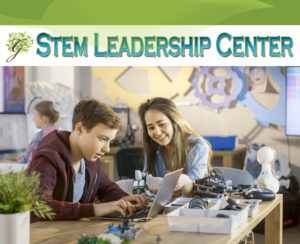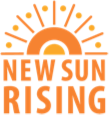 USA Today calls Tony Wagner’s latest book “A road map for parents who want to sculpt their children into innovative thinkers.” I couldn’t agree more. Creating Innovators: The Making of Young People Who Will Change the World focuses on what we must do differently, as parents and educators, in a globalized and technologically altered world when only 69% U.S. students graduate high school, only 56% of those who head for college finish within six years, half of all recent college graduates are either unemployed or underemployed, and one third are living at home. He combines those startling statistics with the news that our economy, 70% of which in based on consumer spending and increasingly fueled by people going into debt, has collapsed and cannot be sustained.
USA Today calls Tony Wagner’s latest book “A road map for parents who want to sculpt their children into innovative thinkers.” I couldn’t agree more. Creating Innovators: The Making of Young People Who Will Change the World focuses on what we must do differently, as parents and educators, in a globalized and technologically altered world when only 69% U.S. students graduate high school, only 56% of those who head for college finish within six years, half of all recent college graduates are either unemployed or underemployed, and one third are living at home. He combines those startling statistics with the news that our economy, 70% of which in based on consumer spending and increasingly fueled by people going into debt, has collapsed and cannot be sustained.
Tony builds on his outstanding work in The Global Achievement Gap, yet matures one step further as he challenges every parent and educator to envision how the young people they work with can develop the capacities to solve problems creatively and innovate. Tony doesn’t just rely on statistics and theory, he uses them to lay the framework for what takes up the body of the book – incredible stories of fascinating young innovators he interviewed and Robert A. Compton filmed. His interviews with these phenomenal young innovators provide anecdotal support to the best practices of teachers from around our nations high schools and universities.
Creating Innovators incorporates and goes beyond his earlier work. You’ll find video snippets of his excellent documentary, The Finland Phenomenon: Inside The World’s Most Surprising School System and short segments of the young innovator interviews either online or embedded in the QR codes in the pages you scan with your smart phone. The experience of hearing the young innovator’s voices, seeing their faces, and meeting through video the people behind the stories makes their stories come alive in ways I haven’t before experienced in a book. It is as though a new spatial dimension was added.
Tony’s stories show that the way to create innovators is to embrace the principles of play, passion, and purpose. He begins with the story of Kirk Phelps, a gifted young man who dropped out of a private high school (to go to Stanford), and dropped out of Stanford to help create the first iPhone at Apple, and left Apple to continue a life searching for a worthy legacy (currently as the product manager at the solar power start-up Sunrun). Tony tells the stories of four STEM innovators: Shanna Tellerman, the young founder and CEO of Sim Ops Studios, Inc., a free web-based 3D game engine; Jodie Wu, the 24 year old president of Global Cycle Solutions pedaling around MIT in Boston and the rural countryside in Tanzania demonstrating equipment she designed and built that is powered by a bicycle; and David Sengeh, traveling home to his native Sierra Leone empowered by Harvard Idea Translation Lab to distribute malaria nets and design improved prosthetics.
Tony also shares stories of young social innovators: Laura White, profoundly influenced by a mentor at Tulane University and Ashoka (an organization that invests in social entrepreneurs) began to make a difference in the world as a high school student when she founded Swim 4 Success and continues to empower college classmates reach out to mentor others; Syreeta Gates, average in high school, failing out of technical school, spent a year volunteering (Team Revolution, AmeriCorps, Project Reach Youth) and several years in mentorship as she founded the SWT (pronounced sweet) Life, a nonprofit umbrella to bring together programs and projects that empower youth of the Bronx; and twenty year old Zander Srodes whose 250,000 copies of a children’s book on sea turtles (written at fourteen) have been translated into five languages and distributed around the world, works (despite failing school) at sea turtle research station in Guatemala. Passion and purpose set these young people apart, a passion and purpose fueled by mentors and parents, a passion and purpose that leads to discipline, courage and tenacity to become imagineers of a more beautiful world.
Tony uncovers a common thread in the young innovator’s stories – that of mentors who were, themselves, innovators and, as innovators, outliers existing in a stratosphere separate from the atmosphere of caution of their education institutions. I found myself identifying with the outlier teachers that inspired each of these young people. Scott Rosenberg teaches film in an inner city alternative school and moved out of the classroom to empower kids to work after hours and create award winning films. Amanda Alonzo does her best teaching in an environment she created outside the classroom as she prepares students to compete in the INTEL science fair.
Tony proposes Olin Engineering College, CMU’s Entertainment Technology Center, Stanford’s d.school, and MIT’s Media Lab as paradigms for higher education in a conceptual age, where students design their own curriculum around their passions, focus on meaningful portfolios of engineering concepts that are conceived cradle to cradle and concept to market. He describes an atmosphere where teachers strive to instill intrinsic motivation, self-direction and lifelong learning. For Tony, success is rooted in five fundamentals; collaboration, multi-disciplinary learning, high risk tolerance, project creation, and personal goal centered learning.
By drawing a picture of a way to nurture innovative young people, Tony Wagner has challenged me to ask some worthwhile questions in regard to my parenting and my teaching. As the fall semester approaches and I develop the syllabus for my Global and Cultural Perspectives class at Duquesne, do I implement what was defined as the first steps of change (according to the Army Learning Concepts for 2015): convert most classroom experiences into collaborative problem solving events led by facilitators; tailor learning to the individual learner’s experience and competence level; and dramatically reduce or eliminate instructor-led slide presentation lectures. The gauntlet has been thrown. Should I pick it up?




2 comments
I just downloaded the book. Can’t wait to read it.
Ellen,
Great post! And yes, pick up the gauntlet, and please post about your experiences. This book is sitting in front of me right now. I just read the first chapter and I am excited to continue.
I like to think of myself as an innovator in some small way, at least out of the box, and always trying to inspire students to reach beyond the immediate and fire up their imagination and creativity. My hope this year is to do this in some way, however small, as a start. I will be working with middle school students in a “STEAM” course that is project based, and I am going to implement through these ideas as much as possible. This course is a collaborative effort with other teachers, so I have to be realistic, but my role is to add the arts to STEM and lead in that way. So, what is there to lose?